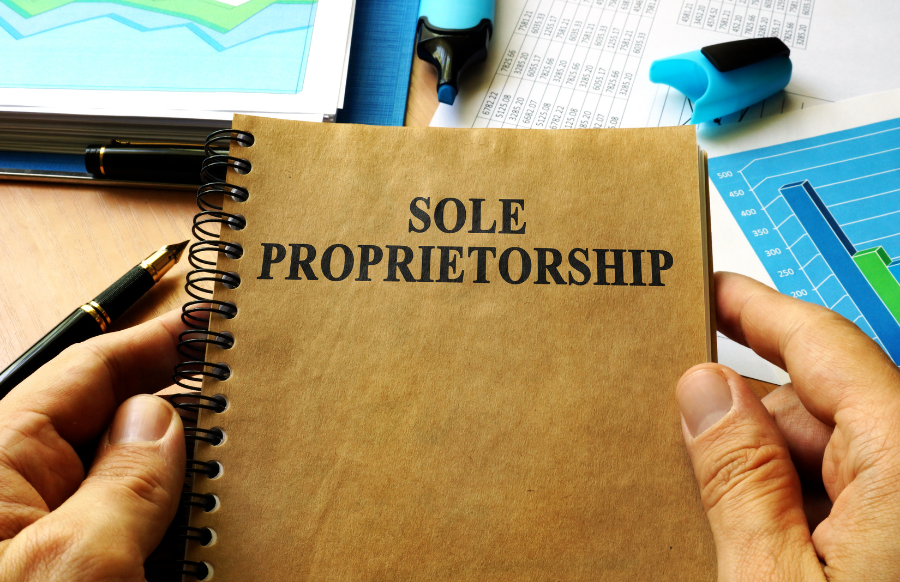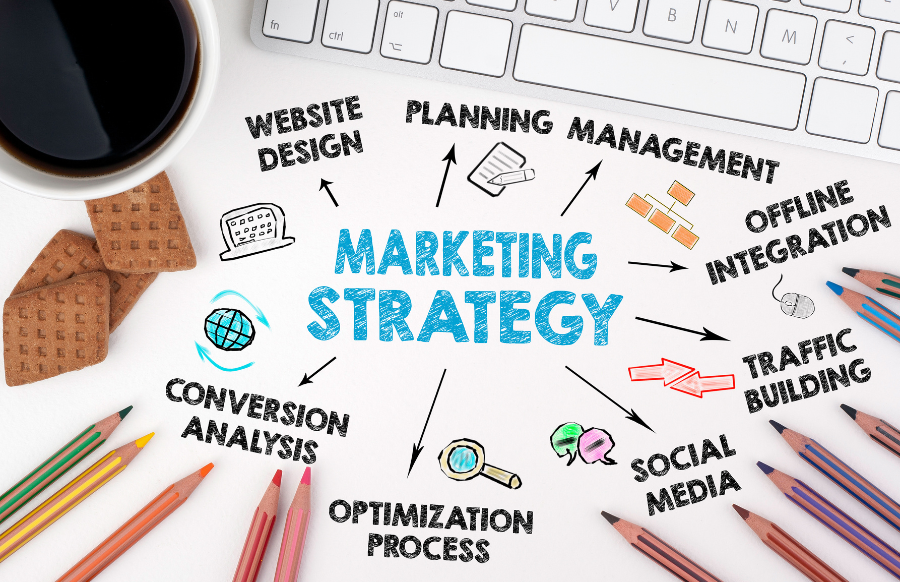Key Takeaways:
- Business Idea: A successful business begins with an idea that matches your skills and market needs.
- Market Research: Understand your competition and potential customers through thorough research.
- Business Structure: Choose the appropriate structure (sole proprietorship, partnership, or corporation) based on your business goals.
- Business Plan: A clear and well-crafted plan is crucial for your business’s direction and attracting potential investors.
- Raising Capital: Explore various funding sources, including grants, loans, crowdfunding, and personal savings.
- Legal Registrations: Registering your business with the appropriate government agencies is essential for legality and smooth operations.
- Technology Use: Employ POS systems and accounting software to streamline business operations and enhance financial tracking.
Does owning a successful business in the Philippines and calling yourself a business owner make your heart beat faster?
Starting a business can be filled with opportunities and challenges, especially in a vibrant economy like the Philippines, a country with an entrepreneurial spirit.
If you’re considering how to start a business in the Philippines, you’re joining the ranks of an estimated 1 million entrepreneurs who launch their ventures here each year.
But where do you start?
From crafting a compelling business idea to navigating the maze of business registration, this guide will take you through each step to transform your entrepreneurial dream into a thriving reality.
Let’s dive in.

Step 1: Come up with a business idea
The spark of entrepreneurship starts with a great idea. But how do you know if your idea has the power to create a successful business in the busy Philippine market?
At Trailblazer, we believe that the key to a successful business is its ability to solve problems, meet needs, and add value for its customers. To help you find a suitable business idea, ask yourself these critical questions:
- What are my interests or hobbies that I could turn into a business?
- What unique skills or expertise could I capitalize on?
- Is there a hole in the market that my company could fill?
- Who would benefit from what I have to offer?
- What would make my business stand out from the crowd or give it something extra?
There are many business opportunities in the Philippines for people who want to make their mark. To give you an idea, below are the top 5 most popular businesses in the Philippines according to MSMEs (Micro, small and medium enterprises):
- Wholesale and retail trade; repair of motor vehicles and motorcycles
- Accommodation and food service industry
- Manufacturing
- Other service activities
- Financial and insurance activities
You can also check out DTI’s list of business ideas here.
Remember, each industry has its opportunities and challenges, so it’s essential to base your business idea on a field you’re interested in and know much about.
Step 2: Research the market

Once you have a good idea for a business, the next important step is to research the market. This process will give you a deeper understanding of your potential customers, competitors, and overall industry dynamics. Here are some essential questions to guide your market research:
- Who are my target customers? What are their demographics, needs, and buying behaviors?
- Who are my competitors? What are they doing well, and where are their weaknesses?
- What is the size of my market? Is it growing or shrinking?
- What trends are shaping my industry? How might they impact my business?
- How does my business differentiate itself from the competition?
- What are the potential opportunities and threats in my market?
- What are the pricing models in my industry? Where does my product or service fit in?
Effective market research can distinguish between a business that does well and one that needs help getting off the ground. It gives you essential information to help you make intelligent decisions, shape your marketing plans, and set up your business for success in the busy Philippine market.
Step 3: Decide on the business structure

Your choice of business structure will affect your business in many ways, including taxes, legal liability, day-to-day operations, and the chance it will grow. There are three main ways to set up a business in the Philippines:
- Sole proprietorship. This is the simplest form of business entity, where one person owns and manages the business. It’s the easiest and least expensive to set up, but the owner is personally liable for all debts and obligations of the company.
- Partnership. This involves two or more people agreeing to share a business’s profits and losses. A partnership can be a general partnership, where all partners share equally in rights and liabilities, or a limited partnership, where one or more partners have limited liability but cannot participate in management decisions.
- Corporation. This legal entity is separate from its owners, providing them limited liability. It requires more paperwork and is more expensive to set up than a sole proprietorship or partnership. However, it’s often preferred for larger businesses or those seeking outside investment due to its structure and legal protection.
When choosing a business structure, you should consider your business objectives, how you feel about taking risks, how much money you need, and how you like running your business. It would be best to talk to a business advisor or an attorney to determine each choice’s legal and financial effects. Remember that having the proper structure can give your business in the Philippines a strong base.
Step 4: Business Planning

What is a business plan?
A business plan is a formal written document that meticulously outlines your business goals and how you intend to achieve them. It serves as a roadmap guiding your business toward growth and success. It details what you want to do and explains how you plan to do it, making it an indispensable tool in your entrepreneurial toolkit.
Why do you need a business proposal?
A business blueprint isn’t merely a document; it’s the compass that guides your business journey. Here are a few compelling reasons why you need one:
- Clarity: It helps crystalize your business idea, giving you a clear vision of what you want to achieve and how you intend to do it.
- Strategy: It’s where you establish your business strategies and action plans. From marketing to operations, it’s the document where you detail the tactics to drive your business toward its goals.
- Financing: A well-crafted business plan is crucial for entrepreneurs seeking external funding. It demonstrates to potential investors or financial institutions that you’ve thought things through and have a viable business proposition.
- Benchmarking: It serves as a baseline for tracking your progress and making necessary adjustments as your business evolves.
- Communication: It’s an effective tool to communicate your business vision, mission, and strategies to your team, ensuring everyone is aligned and working towards the same objectives.
What to avoid in your business plan
As important as a business plan is, it’s just as important to know what to avoid when writing it. Here are a few mistakes that people often make:
- Overly optimistic projections: It’s great to be hopeful, but unrealistic sales and revenue forecasts can harm your credibility. Always base your predictions on reliable data and plausible assumptions.
- Ignoring the Competition: No business operates in a vacuum. Ensure you’ve thoroughly analyzed your competitors, understanding their strengths and weaknesses.
- Lack of Clarity: A business strategic plan is not the place for jargon or ambiguity. Keep your language straightforward and your objectives clear.
- No Marketing Plan: A great product or service is part of the story. Ensure you have a robust marketing strategy to reach your target audience.
- Skipping the Executive Summary: The first section potential investors will read is a business synopsis. Skipping or not giving it due importance could make or break their interest.
Business plan format
The format can vary, but here’s a typical outline:
- Executive Summary
- Company Description
- Market Analysis
- Organization and Management
- Service or Product Line
- Marketing and Sales Strategy
- Funding Request (if applicable)
- Financial Projections
- Appendices
6 steps to a great business plan:
To create a great business operational plan, follow these six steps:
- Begin with a clear, concise executive summary that gives an overview of your business.
- Provide a thorough company description that explains what your business does, who it serves, and what differentiates it.
- Conduct a comprehensive market analysis that shows your understanding of your industry, competition, and target audience.
- Detail your business structure, management team, and key personnel.
- Explain your product or service, its benefits, and how it meets the needs of your target market.
- Outline your marketing and sales strategy, demonstrating how to attract and retain customers.
A well-crafted business model doesn’t just guide you as you build your business; it also helps stakeholders, including potential investors, understand your vision and the market potential of your venture in the Philippines.
Step 5: Raise your capital

To bring your business idea to life, you’ll need capital. Your business plan should help you figure out how much money you’ll need to start and run your business until it turns a profit. Here are some places you could get money:
- Small business grants. Small business grants are funds given to a business that doesn’t have to be paid back. Some government agencies and private organizations in the Philippines offer grants to help micro businesses, especially those in specific industries or regions.
- Small business loans. These are loans specifically designed for small businesses. Banks, microfinance institutions, and government agencies like the Development Bank of the Philippines (DBP) offer loans with terms favorable to startups.
- Personal Loans. These are loans that individuals obtain for personal use but can also be used to finance a business. They can be accessed from banks and other financial institutions, though interest rates may be higher than for small business loans.
- Crowdfunding. This involves raising small amounts of money from many people, typically via the Internet. Platforms like Kickstarter or local sites like The Spark Project allow you to pitch your business idea to potential backers.
- Friends and Family. Often, friends and family are willing to invest in your business by giving you a loan or buying a share.
Remember that each way to get money has its advantages and risks. Before choosing the best funding source for your business, it’s essential to carefully think about what you need, how much it will cost, and how easily you can pay it back. Starting a business in the Philippines, like anywhere else, requires money. Make sure to plan and raise yours wisely.
Step 6: Choose a strategic business location

Location can make or break a business. The right place can give your business the exposure it needs, bring in the customers you want, and affect your operating costs. When starting a business in the Philippines, thinking carefully about a strategic location is essential.
Think about what your business is about. For example, a retail store would benefit from high foot traffic, while a manufacturing business may need ample space for equipment and easy access to transport links.
Here are some factors to keep in mind:
Demographics
Ensure your location aligns with the demographics of your target market. The area’s population size, income level, and lifestyle habits can significantly affect your business’s success.
Accessibility
How easy is it for customers and employees to reach your business? Look at the transport links, parking availability, and overall convenience.
Competition
Are there similar businesses nearby? Sometimes being close to competitors can be beneficial, but other times it can lead to market saturation.
Cost
Can your business afford the rent or purchase price, utilities, taxes, and other expenses associated with the location?
Local Laws and Regulations
Different areas may have specific zoning laws and business regulations. Make sure your business activities are allowed in the chosen location.
Growth Potential
Does the location offer room for business growth?
Remember that a good location can give your business an edge. Take your time researching, look at more than one site, and ask a professional for help if needed. Choose carefully because your location is more than just an address—it’s where your business objectives come to life.
Step 7: Business registrations and permits

Once you’ve secured your capital and chosen your location, it’s time to legitimize your business. This involves applying for the necessary permits and licenses to operate legally in the Philippines.
Apply For Business Permits and Licenses
Businesses require different permits, but all companies need a mayor’s or business permit from their local city or municipality.
- Department of Trade and Industry (DTI): Acquiring exclusive rights to your business name necessitates registration with the appropriate agency. This step is mandatory for sole proprietors. You can complete your registration at any Department of Trade and Industry (DTI) Regional or Provincial office. A directory of these offices is available on the Contact Us page. Alternatively, you can register online at www.bnrs.dti.gov.ph. For those outside Metro Manila, applications for Business names can be filed at the nearest DTI regional or provincial offices. The provided link can access the Sole Proprietorship Business Name registration application form. Download, fill out the form, and present it to your local DTI office for walk-in applications.
- Securities and Exchange Commission (SEC): For a Partnership or Corporation to be recognized as a legal or judicial entity, it’s critical to register with the Securities and Exchange Commission (SEC).
Register at: Head Office: Secretariat Building, PICC Complex, Roxas Boulevard, Pasay City, 1307
Trunkline No.: (+632) 8818-0921
Email: imessagemo@sec.gov.ph
Website: www.sec.gov.ph (for online registration) - Cooperative Development Authority (CDA): All cooperatives must register with the CDA per Republic Act 6938/6939. You may register at: Cooperative Development Authority (CDA)
6/F Benlor Building, 1184 Quezon Avenue, Quezon City
Tel. No.: (+632) 373.6895
Website: www.cda.gov.ph - Local Government: Besides the Mayor’s Permit, your local government unit may require you to obtain a Barangay Clearance from your local barangay office. This confirms that you’ve asked permission to operate your business in the community. The process of registration can differ across various cities and municipalities. To access a comprehensive list of Local Government Units (LGUs), kindly refer to the Department of Interior and Local Government website or visit http://lgu201.dilg.gov.ph/.
Register with the Bureau of Internal Revenue (BIR)
All businesses must register with the BIR to obtain a Tax Identification Number (TIN), register their books of accounts, secure BIR-printed invoices and receipts, and know their tax type and due dates.
Register with the Social Security System (SSS), PhilHealth, and Pag-IBIG Fund
Once you hire employees, you must register your business with the Social Security System, the Philippine Health Insurance Corporation (PhilHealth), and the Home Development Mutual Fund (Pag-IBIG Fund).
These provide your employees with benefits, healthcare, and housing loan programs.
Register with the Department of Labor and Employment (DOLE)
You must register your business with DOLE if you employ five or more workers. This ensures you comply with the country’s labor laws and standards.
Step 8: Open a business bank account

Having a separate bank account for your owned business is not just a good idea—it’s a must. It keeps your business transactions different from your own. This makes it easier to do your taxes and gives you a clearer picture of your business’s financial health.
Here’s how you can open a bank account for your business in the Philippines:
How to Choose the Right Bank
Consider the bank’s reputation, where its branches are, fees, minimum balance requirements, and services like online banking and credit card processing.
Here are some additional tips for choosing a bank for your business:
- Get quotes from multiple banks. This will help you compare rates and fees and find the best deal for your business.
- Consider the bank’s reputation. Read online reviews and talk to other business owners who bank with the bank you are considering.
- Make sure the bank has the products and services you need. Not all banks offer the same products and services. Ensure your chosen bank has the right products and services for your business.
- Talk to a banker. A banker can help you understand the bank’s products and services and answer any questions.
Prepare the Required Documents
The requirements may be different from bank to bank, but your business permit, SEC or DTI registration, barangay clearance, and TIN are likely to be needed by most banks. If you’re a business, you may also need your articles of incorporation and a board resolution saying that you want to open a bank account.
Application Process
The next step is to go to the bank in person and complete an application form. Once you’ve picked a bank and completed your paperwork, you can do this. The bank will review your papers and ask you a few questions.
Initial Deposit
You’ll be asked for an initial deposit once accepted. The amount is different at each bank.
Here are some of the best banks in the Philippines for businesses to consider, along with their advantages:
- BDO Unibank
- The largest bank in the Philippines has an extensive network of branches and ATMs, providing convenience and accessibility.
- Offers a wide range of business banking products and services, including loans, deposits, and treasury services.
- They are known for excellent customer service, ensuring a positive banking experience.
- Competitive rates can benefit businesses seeking favorable terms for their financial transactions.
- Metropolitan Bank and Trust Company (Metrobank)
- The second-largest bank in the Philippines, providing stability and reliability.
- Offers innovative products and services, demonstrating a commitment to staying up-to-date with industry trends.
- Strong focus on customer service, aiming to deliver high client satisfaction.
- Bank of the Philippine Islands (BPI)
- Third-largest bank in the Philippines, providing a sense of stability and reliability.
- Strong financial performance, indicating a solid track record and financial strength.
- Commitment to corporate social responsibility can appeal to businesses looking to align with socially responsible institutions.
- China Banking Corporation (Chinabank)
- Leading commercial bank in the Philippines, signifying its prominence and market presence.
- Strong financial performance, indicating stability and sound management.
- Commitment to customer service ensures businesses receive reliable and efficient banking services.
- Development Bank of the Philippines (DBP)
- Government-owned bank with a focus on supporting Philippine businesses and promoting economic development.
- Offers loans and financial services tailored to meet the specific needs of businesses and borrowers.
- Long history of supporting Philippine businesses and providing expertise in the local business landscape.
Below are some of the best digital banking options for businesses in the Philippines, along with their advantages:
- Offers a variety of business banking products and services, including high-interest savings accounts, business credit cards, and business loans.
- Known for its innovative products and services, indicating a focus on providing modern and convenient banking solutions.
- Strong commitment to customer service, ensuring a positive and personalized banking experience for businesses.
- Offers a range of business banking products and services, including high-interest savings accounts, business credit cards, and business loans.
- Strong financial performance, indicating stability and sound management.
- Demonstrates a commitment to corporate social responsibility, appealing to businesses that value ethical practices.
- Provides a high-interest savings account with a guaranteed 6% interest rate, offering an attractive opportunity for businesses to earn higher returns on their savings.
- Known for its simple and user-friendly platform, making banking operations convenient and accessible.
- Competitive interest rates are favorable for businesses looking to maximize their savings.
- Offers a range of products and services tailored to small and medium-sized businesses, including business checking accounts, business loans, and business credit cards.
- Known for competitive rates, indicating favorable terms for financial transactions.
- A convenient online banking platform provides businesses easy access and efficient banking operations.
- RCBC EasyInvestProvides a digital banking platform for businesses to invest in stocks, bonds, and mutual funds.Known for low fees, offering businesses cost-effective investment opportunities.Easy-to-use platform, enabling businesses to navigate the investment process smoothly.
Remember that a business bank account is more than just a place to store your earnings. It’s a tool that can help you manage your cash flow, make transactions easier, save for the future, and build a financial history for your business in the Philippines. Think of it as an essential part of your business.
Step 9: Set up an accounting system

When running a business, it is essential to have an effective accounting system in place. It helps you keep track of your income and costs, ensure you’re following the law, and make intelligent business decisions. Here’s how to set up your business’s accounting system in the Philippines:
Choose the Right Accounting Method
Decide if you’ll use cash accounting (recording transactions when cash changes hands) or accrual accounting (recording transactions when they occur, regardless of payment). Small businesses often start with cash accounting due to its simplicity.
Choose the Right Accounting Software
To make things easier, use accounting software. The right software for you will depend on your needs, budget, and business size. QuickBooks, Xero, and FreshBooks are all popular choices.
Set Up Your Chart of Accounts
This list of accounts will categorize your transactions. Common accounts include assets, liabilities, equity, income, and expenses.
Document Your Financial Policies
Documenting your financial policies helps ensure consistency and transparency in handling your business’s financial matters.
Maintain Regular Financial Reviews
Review your financial statements regularly to see how your business is doing financially and make intelligent choices.
Remember that setting up an accounting system might seem hard initially, but it’s necessary if you want to manage your business’s finances well. If you need help, consider hiring an accountant or bookkeeper. Your business will be more likely to make money if you work hard at this step.
What is POS?
A POS, or point of sale system, combines software and hardware that allows businesses to complete transactions and simplify critical day-to-day business operations. Essentially, it’s where a customer pays for goods or services at your store.
Here’s how a POS system can help businesses improve their accounting systems:
- Seamless Transactions: A POS system can process payments quickly and accurately, reducing the risk of manual errors that can throw off your books.
- Real-Time Tracking: It provides real-time updates on your sales, inventory, and customer information, ensuring your accounting system always has the most recent and accurate data.
- Inventory Management: A POS system keeps track of your stock levels, automatically updating inventory records in your accounting system. This means you always have a clear picture of what’s selling and what’s not, helping you make smarter inventory decisions.
- Detailed Reports: A POS system can generate detailed sales reports, revealing patterns and trends vital for business planning. These insights can be invaluable for forecasting, budgeting, and other accounting tasks.
- Streamlined Operations: It can integrate with your other business systems, like your accounting software, creating a seamless flow of information across platforms. This integration simplifies your accounting process, making it easier to manage and reducing the chance of errors.
A POS system is more than just a cash register; it’s a powerful tool that can significantly enhance your accounting efficiency by providing a more transparent, real-time overview of your financial status and helping drive your business toward success in the Philippine market.
Step 10: Create a website

In this digital age, your business needs to have a website. It not only makes you more known, but it also gives you an edge over your competitors. Here’s how to make a website for your business in the Philippines:
Choose a Domain Name
Your domain name is how people know who you are online. Ensure it’s short, easy to spell, and fits your business well. Use a domain registrar you can trust to buy the domain you want.
Example of a domain name: trailblazer.com.ph
Choose a Web Host
A web host gives your website the technology to be seen online. Choose a host based on how much storage, speed, and support your business needs.
You may visit this site to learn more about web hosting.
How to Make Your Website
When designing your website, put the user experience first. It should be easy to use, look good, and work well on mobile devices.
Create Essential Pages
Your website should have at least a home page, an “about” page, a page for products or services, and a “contact” page. Include clear calls to action to help people know what to do next.
Optimize for SEO
SEO, short for Search Engine Optimization, is a technique to make your business website easier to find online. It’s like putting a big, bright sign on your store in the digital world. When people search for products or services you offer, SEO helps your website appear closer to the top of their search results on Google or other search engines. This makes it more likely that people will visit your site and potentially become your customers.
You use relevant keywords throughout your website to help rank higher in search engine results. Remember to put your keywords in the titles and descriptions of your meta tags, too.
Test and publish
Before you make your website public, make sure it works on different devices and browsers. When everything is ready, click “Publish.”
Update Regularly
Keep your content fresh and up-to-date by updating it often. Updates not only keep people interested, but they also help your SEO ranking.
Websites are more than just online business cards. It’s a powerful marketing tool that can drive sales, build credibility, and make your brand known digitally. So, make a site that shows what your business is about and helps your customers.
Step 11: Market and promote your business

Once your business is ready, it’s time to make some noise! Effective marketing can boost your visibility, attract potential customers, and grow your business. Here’s how to market and promote your business in the Philippines:
Online Marketing Strategies:
Social media
Use sites like Facebook, Instagram, LinkedIn, and Twitter to connect with customers, share your content, and promote your products or services. Engage with your audience often to build loyalty and relationships.
Email marketing
Have people who visit your website sign up for your email list so you can send them updates, special offers, and other helpful information. It’s a great way to remind them of your business.
Content marketing
Regularly add valuable and relevant content to your blog or YouTube channel. This can boost your SEO ranking, show that you are an expert in your field, and bring more people to your site.
Paid advertising
Pay-per-click advertising on Google AdWords or Facebook Ads to reach potential customers.
You can incorporate these successful and proven online marketing tactics into your business strategy.
Offline Marketing Strategies
Networking
Attend industry conferences, trade shows, or local community events to meet people in your field. This can help you make valuable business connections and attract people who might buy from you.
Print Media
If you want to reach more people, you could use brochures, flyers, or ads in local newspapers.
Promotions and Events
To attract new customers, host events, or offer special deals.
Partnerships
Work with businesses similar to yours to help promote each other.
Remember that marketing isn’t about selling. It’s about getting the right message to the right people. Be consistent, develop new ideas, and listen to your customers’ words. Your marketing efforts in the Philippines may take a while to pay off, but if you are patient and keep at it, they can make a big difference in the success of your business there.
Final Thoughts

There you have it – a complete guide on how to start a business in the Philippines.
Starting a business in the Philippines may seem complicated, but it can be an exciting journey with the right plan and attitude.
Remember that every successful business started with an idea that took time to plan and carry out.
Get educated, keep your mind open to learning, and stay strong even when things get complicated.
Your business journey will never be easy, but each obstacle will bring you closer to your goal.
Let’s make that idea for a business happen today. Trust the process, believe in your vision, and your business will grow.
